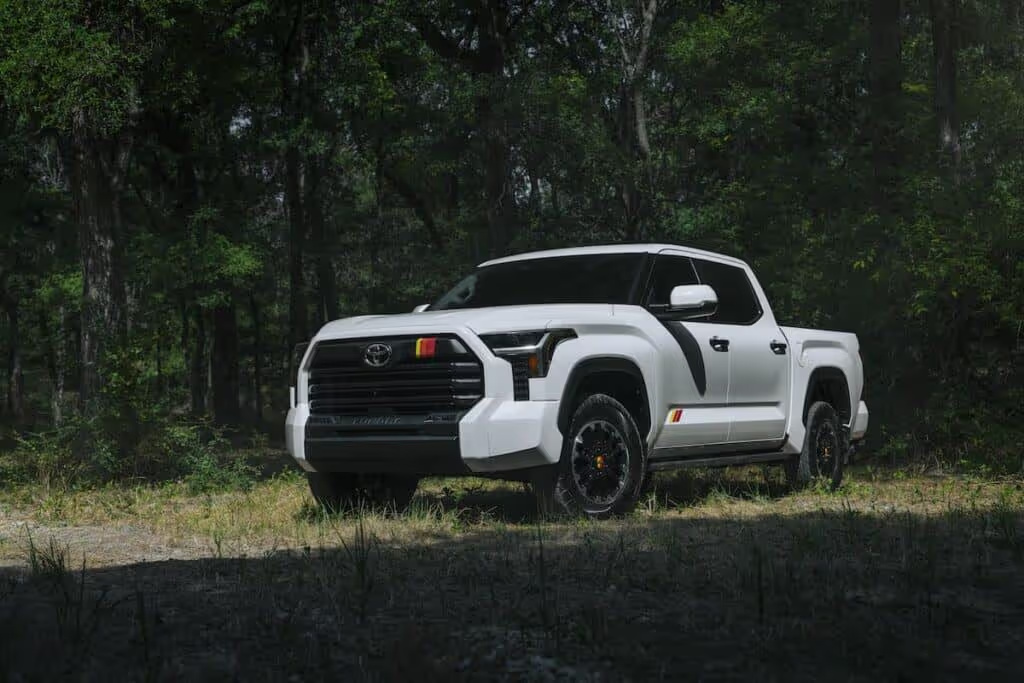Trucks have long been more than just a mode of transportation in rural America—they’re indispensable tools that serve as lifelines in agriculture, construction, and land management.
For farmers and ranchers, a good truck isn’t just about horsepower, chrome trim, or touchscreen infotainment. It’s about endurance.
It’s about how many fence posts it can carry, how reliably it starts after a frigid night, and whether it can make the haul back from the feed store without throwing a check engine light.
In that world, a truck’s worth is measured in grease, grit, and time, not tech specs and luxury upgrades.
Yet, in today’s market, it’s harder than ever to separate the real workhorses from the luxury-laden imposters that look tough but would cry at the first sign of cow manure.
Over the last two decades, pickup trucks have undergone a major transformation. What was once a barebones utility vehicle has now evolved into a segment that includes everything from high-end executive rides to stripped-down fleet workhorses. The line between function and fashion has become increasingly blurred.
Some trucks are built to pull trailers through muddy pastures and carry the scars of labor with pride. Others are polished to perfection, better suited to valet parking or Instagram reels than a morning feeding calves or hauling equipment across rough acreage.
While both types of trucks have their place in today’s automotive landscape, their suitability for life on a farm could not be more different.
This dichotomy has become especially important for those who live and work in agricultural environments, where the choice of a truck can directly impact productivity and downtime.
A breakdown in the middle of a hay run or during calving season isn’t just inconvenient—it can be a serious setback. Farmers and rural workers need trucks that prioritize mechanical reliability, simplicity, and raw power over fancy electronics or plush comfort.
That’s not to say luxury trucks have no value; they offer an unmatched driving experience and creature comforts for those who want a truck that reflects personal style or doubles as a status symbol.
But those trucks belong in a very different environment—one paved in asphalt and optimized for style, not soil.
In this article, we’re taking a deep dive into both sides of that divide. We’ll highlight five trucks that are genuinely built for the challenges of farm life—models that have earned their stripes (and rust) by putting in the hard hours year after year.
These are the trucks you can find with 300,000 miles still chugging through the fields, often with torn seats, dented beds, and a heart that just won’t quit.
On the flip side, we’ll also examine five trucks that, while marketed for ruggedness, are far more at home in a dealership showroom or a suburban driveway.
These trucks offer power, yes—but also carry high-tech features, delicate interiors, and repair costs that make them impractical in the mud-caked realities of farm work.
This isn’t about brand loyalty or nostalgia. It’s about practicality and honesty. Whether you’re shopping for your next farm truck or just curious about which trucks are all talk and no traction, this list will guide you through the best and worst of both worlds.
It’s time to separate the mechanical mules from the mechanical models. Because out here, where the roads turn to ruts and work starts before sunrise, you need a truck that can carry more than its weight—you need one that can carry its worth.
Also Read: Top 5 Cars With Headlights That Fog Up Frequently
5 Trucks That Can Handle Farm Life
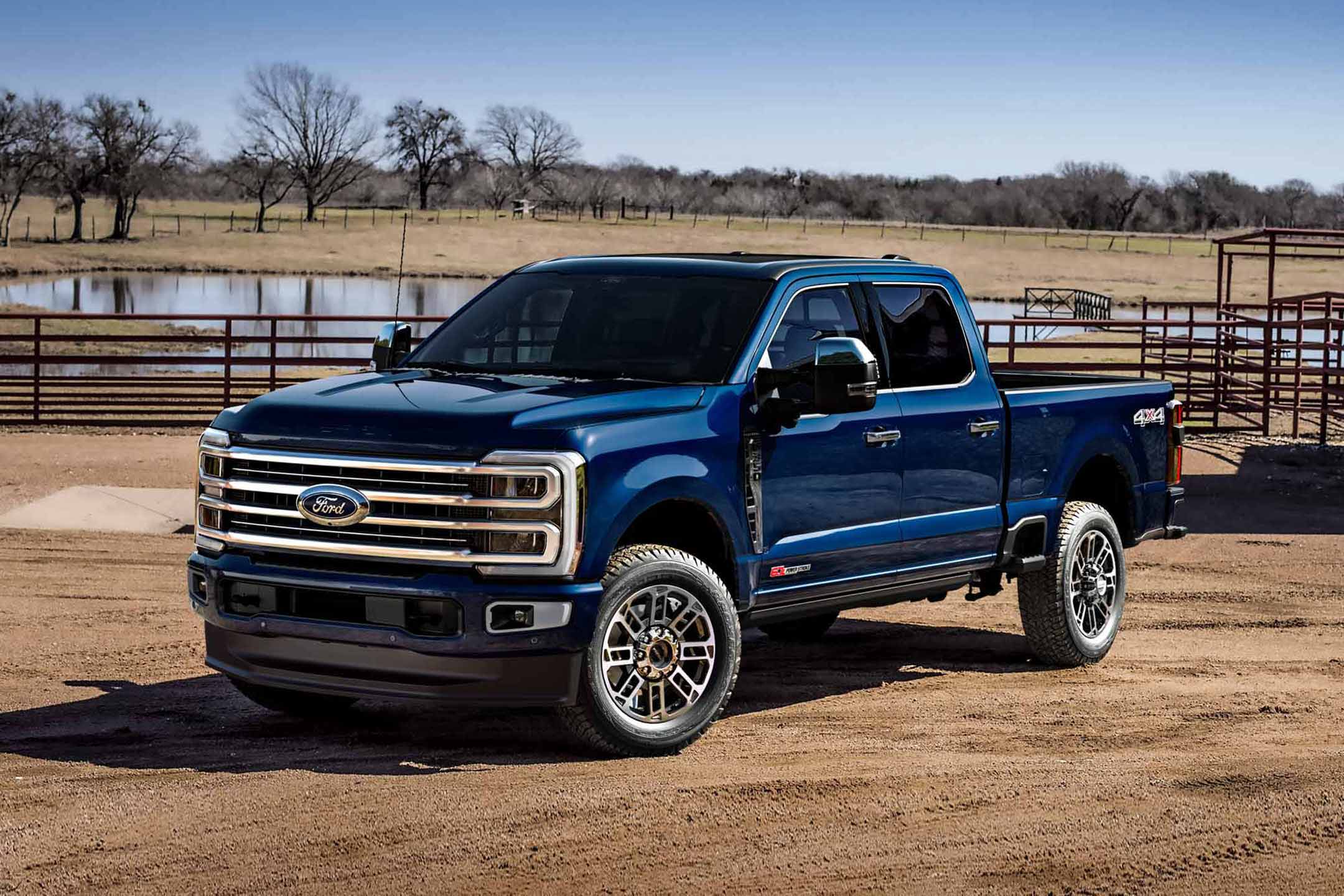
1. Ford F-250 Super Duty (All Generations)
Few trucks have earned their place on the farm quite like the Ford F-250 Super Duty. Since its debut, this truck has proven itself to be a true blue-collar machine, built with durability, capability, and toughness in mind. The Super Duty is designed to excel in brutal conditions—be it freezing winters, muddy fields, or 110-degree heat.
Equipped with a heavy-duty frame and offered with several powerful V8 engines and the renowned Power Stroke diesel lineup, the F-250 is purpose-built for serious towing, heavy hauling, and rough, off-road work.
Its towing and payload ratings are more than enough to handle large livestock trailers, heavy equipment, or full loads of hay and feed. Many farmers consider it their number one piece of mobile equipment, not just a truck.
The F-250 isn’t just about brute strength, though—it’s also engineered with longevity in mind. Older models are especially valued on farms due to their lower electronic complexity and more mechanical drivetrains.
These trucks, particularly those from the early 2000s and late ’90s, are still running strong across rural America.
Farmers appreciate their analog simplicity, straight-axle durability, and ease of maintenance. Even the interiors of the more work-focused trims (like the XL or XLT) are tailored for mess—vinyl flooring, basic cloth seats, and minimal tech make it easy to climb in with muddy boots and keep working. It’s not about luxury; it’s about utility, and that’s exactly what you need when the chores never end.
Perhaps the F-250’s biggest advantage is its wide serviceability. Parts are easy to find, even in smaller towns, and many farm owners or local mechanics have decades of experience fixing these trucks.
Whether you’re replacing U-joints, a fuel pump, or just patching a corroded exhaust, you won’t have to send it to a dealer or wait weeks for specialty components.
The F-250 doesn’t just work hard—it’s designed to stay working, no matter the abuse it takes. For the demands of farm life, it’s more than reliable—it’s essential.

2. Ram 2500 Heavy Duty (2003–Present, Especially with Cummins Diesel)
The Ram 2500 equipped with the 5.9L or 6.7L Cummins turbo diesel engine has become almost mythical in farm communities for its raw power, reliability, and reputation for outlasting even the toughest work.
This truck is a towing beast, thanks in large part to the torque-rich inline-six Cummins that can haul loaded trailers, pull out tree stumps, or drag broken-down equipment across a pasture without breaking a sweat.
It’s common to find Ram 2500s with 250,000–300,000 miles still working daily, a testament to the drivetrain’s bulletproof design. And unlike many modern diesel engines, the early 5.9L versions lack the problematic emissions systems that can cause major headaches in newer trucks.
The Ram’s heavy-duty underpinnings make it ideal for rugged farm use. Solid axles front and rear, heavy-duty leaf springs, and tough transfer cases mean that this truck is built to take a pounding.
While newer trims like the Laramie or Limited offer leather seats and high-end tech, the base-level Tradesman and SLT trims are the preferred choices for farmers who want a no-nonsense truck they can pressure wash inside and out.
Interiors are durable, practical, and simple—exactly what you need when the truck is doubling as a workbench or a lunchroom. This is a machine designed with hard labor in mind, not polished aesthetics.
Another huge benefit of the Ram 2500 is its maintainability. The Cummins engine is known for being relatively easy to work on compared to V8 diesels, and parts are readily available thanks to its popularity in both consumer and commercial applications.
From fuel filters to injectors to lift pumps, everything is accessible and designed with service in mind. The after-market support is enormous too, making it easy to upgrade or repair critical components.
If you need a truck that doesn’t just survive farm life but thrives in it, the Ram 2500 with the Cummins is about as close to a farm legend as it gets.
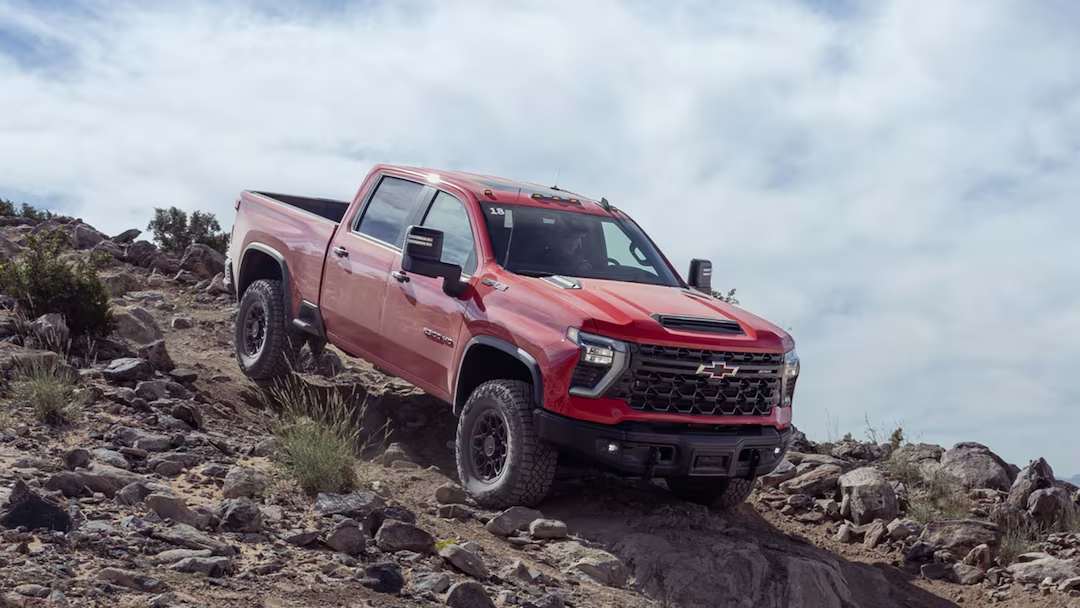
3. Chevrolet Silverado 2500HD (2001–2019, Duramax Diesel Years)
The Silverado 2500HD, particularly those equipped with the Duramax diesel and Allison transmission combo, is another heavy-duty champion that’s earned its place on farms across the country. Starting in the early 2000s, the Duramax lineup brought a balance of power, efficiency, and reliability that helped Chevrolet establish itself in the diesel market.
With torque figures that steadily grew over the years, the Silverado 2500HD can tow massive loads without stress, from hay wagons to horse trailers.
The Allison transmission, paired with the Duramax engine, provides smooth and confident gear changes even under load, reducing wear and improving longevity—a critical factor for farm work, where towing isn’t an occasional task; it’s a daily requirement.
Beyond the engine, the Silverado 2500HD stands out for its robust construction. The frame is overbuilt, the suspension is tuned for load-bearing, and the brakes are strong enough to handle repeated, heavy-duty use without fading.
The independent front suspension provides a more comfortable ride than solid axle competitors, which can be a blessing on bumpy back roads or over long distances.
Inside, trims like the WT (Work Truck) or LT are more spartan but far more practical than the fancier High Country or LTZ options. You don’t need wood grain and leather—what you want is simplicity, durability, and a cab that can handle mud, grease, and grit.
The real beauty of the 2500HD is how it blends brute strength with day-to-day usability. Whether you’re hauling seed to the next field, running a portable welder in the bed, or just commuting to the supply store, the Silverado gets it done with minimal fuss.
Its long track record of reliability, strong community support, and solid parts availability make it a go-to choice for those who treat their trucks like tools, not toys. If you’re looking for a workhorse with diesel endurance and proven toughness, the Silverado 2500HD won’t let you down.
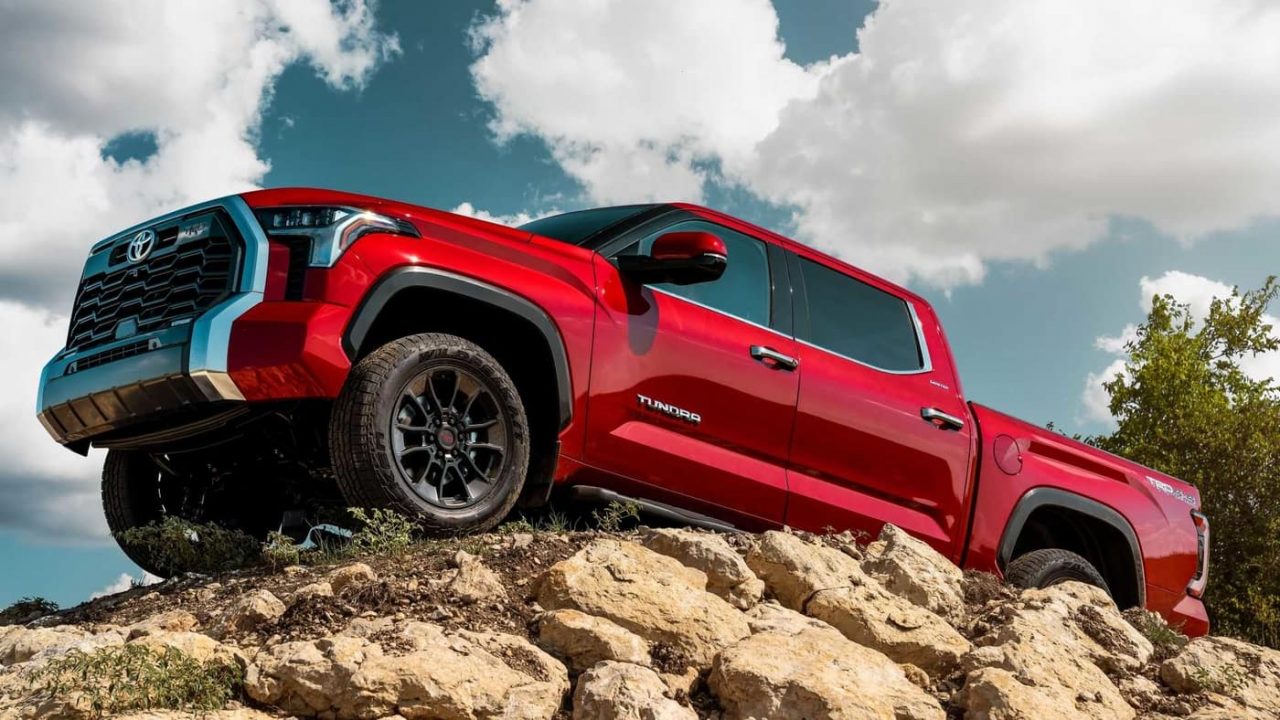
4. Toyota Tundra (2007–2021, Second Generation)
The second-gen Toyota Tundra may not scream “farm truck” in the same way as an F-250 or Ram 2500, but anyone who’s owned one for more than a decade knows just how much abuse these trucks can take—and keep coming back for more.
The 5.7L i-Force V8 is a powerhouse with excellent low-end grunt, capable of towing heavy equipment or loaded trailers with ease. While its towing numbers don’t quite match the diesels, what the Tundra lacks in max spec it more than makes up for in reliability.
This is a truck that consistently runs 200,000 to 300,000 miles without needing major repairs—something that can’t be said for a lot of newer half-ton pickups loaded with sensitive electronics.
Built in Texas for American roads (and farms), the Tundra uses a fully boxed frame, massive brakes, and a straightforward suspension system that excels in rural environments. It may lack some of the techy frills of its competitors, but that’s exactly why it performs so well in farm settings.
The basic SR or SR5 trims come with tough cloth or vinyl interiors, durable dash layouts, and controls that are easy to use, even with gloves on. It’s built for people who work with their hands, not for those who need voice-activated climate control.
Where the Tundra really earns praise is in its bulletproof reputation. It rarely breaks down, handles rough terrain without complaint, and keeps its resale value exceptionally well. Repairs are infrequent, but when needed, the layout under the hood is clean and accessible.
Oil changes, spark plugs, belts, and hoses are straightforward—plus, it’s not overrun with sensors that can trip the check engine light every time you hit a bump.
On a farm, time is money, and downtime is unacceptable. The Tundra may be underrated in heavy-duty circles, but for a farmer who needs consistency, it’s a quiet giant.
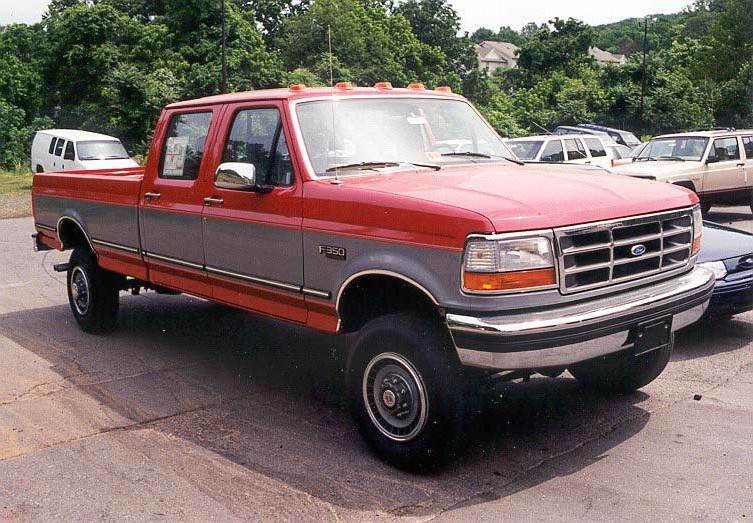
5. Ford F-150 (1992–1996, Ninth Generation)
Back when trucks were trucks and not rolling computers, the ninth-generation Ford F-150 reigned supreme. These trucks, built from 1992 to 1996, were the last of a simpler era, when ruggedness, mechanical reliability, and ease of service were the main selling points.
Farmers gravitated toward this generation for good reason: engines like the legendary 300 cubic inch inline-six and the Windsor 5.0L and 5.8L V8s could take serious abuse without blinking.
These engines weren’t fast, but they were virtually unkillable and easy to service with just a wrench, a floor jack, and some good old-fashioned know-how.
The body-on-frame construction, simple 4WD system, and tough leaf-spring suspension made the F-150 incredibly durable. You could load it to the brim with tools, fence posts, or bales, and it just kept going.
Unlike modern trucks, there were no fragile sensors to freak out from dust, no drive-by-wire systems to misfire in the cold, and no plastic trim to crack when you kicked it with a steel-toe boot.
The interiors were no-frills, but the bench seats, big steering wheels, and analog gauges had a kind of utility that’s almost extinct today. You didn’t need Bluetooth to run a farm—you needed a truck that started every morning and didn’t mind being coated in dirt and grease.
Even today, these old Fords are cherished on farms across the country. They’re often kept around as backup vehicles or used for chores that newer, more expensive trucks are too pretty to handle.
Parts are everywhere, and maintenance is dirt cheap. They may not be fast, flashy, or high-tech, but they represent something deeply valuable: a tool you can trust. If you’re looking for a truck that embodies the spirit of practical, hardworking agriculture, the ninth-gen F-150 is a timeless icon.
5 Trucks That Belong in a Showroom (Expanded)
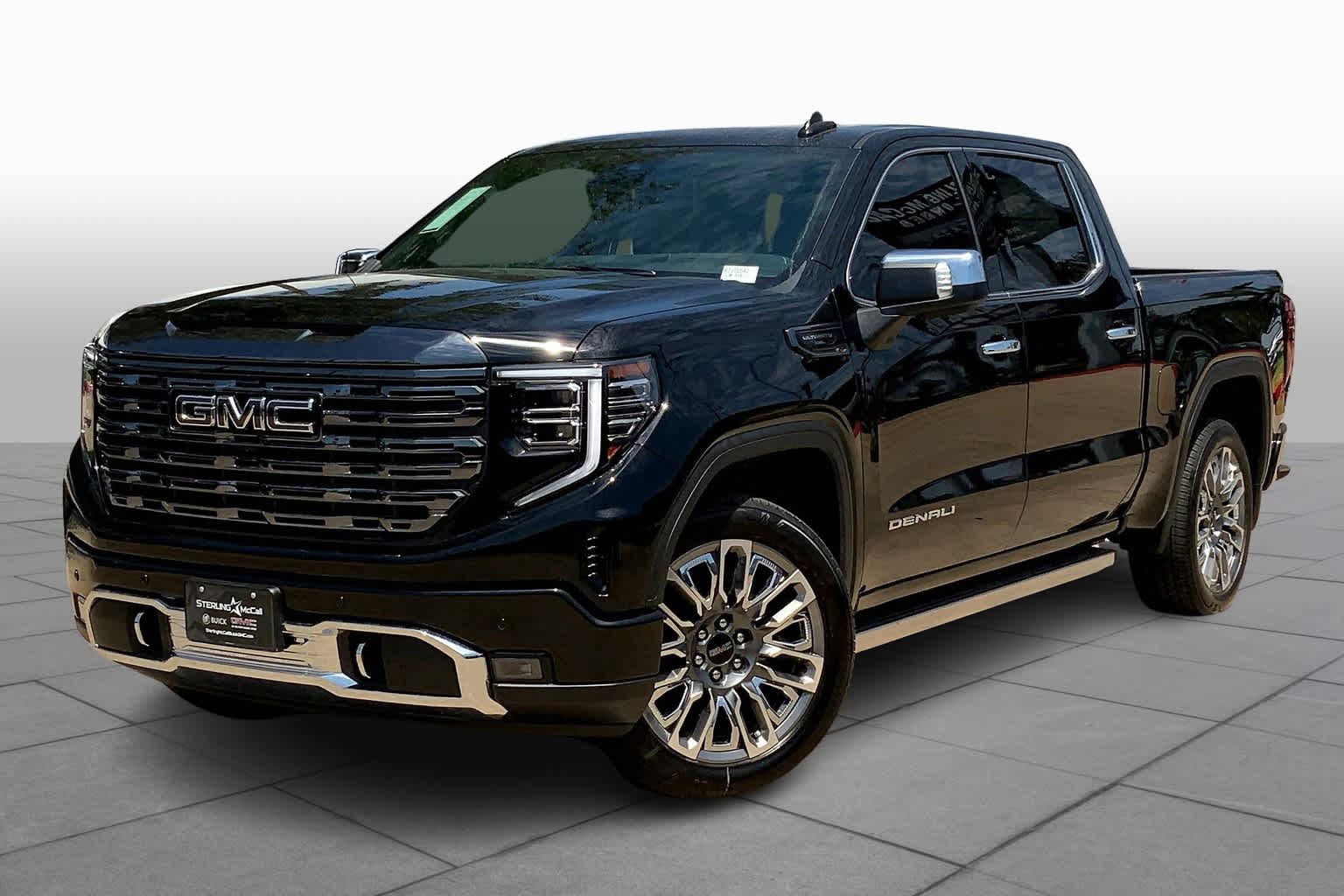
1. GMC Sierra Denali 1500 (2019–Present)
The GMC Sierra Denali 1500 is a statement piece—a full-size pickup truck that has been styled, specced, and engineered more for the valet lot than the pasture.
It’s loaded with luxury features that dazzle in a dealership showroom: perforated leather seats, open-pore wood trim, adaptive suspension, and advanced infotainment with full smartphone integration.
While its 6.2L V8 and 10-speed automatic transmission offer serious horsepower and towing figures, the package is tailored for a premium customer who values comfort over capability. It’s a truck that talks tough, but under the surface, it’s more about luxury branding than rugged durability.
On paper, the Denali 1500 can tow and haul respectably, but its delicate design shows quickly in a farm environment.
With power-retractable steps, a tailgate that splits, folds, and dances like a circus act, and a suspension optimized for smooth highway driving rather than rough terrain, the Denali simply isn’t built to endure abuse.
Try dragging this thing through a muddy field, and you’re asking for clogged sensors, scratched paint, and a whole day explaining to your dealer why the multi-pro tailgate stopped functioning after backing into a trailer.
This isn’t a tool—it’s a showroom centerpiece designed to impress executives, not farmers hauling hay in January mud.
Moreover, the electronic complexity of the Denali makes it a nightmare for DIY maintenance or field repair. Even routine tasks like battery replacements or headlight swaps can involve removing trim pieces or navigating diagnostic menus.
Many of its most advanced features—heads-up displays, lane-keeping assist, surround-view cameras—are highly sensitive and vulnerable to moisture, dust, and vibration, all of which are part of daily life on a working farm.
In short, while the Denali 1500 looks stunning and performs well in the suburbs, its flashy features and fragile components make it more of a luxury item than a functional farm rig. It’s best left in a garage where the biggest challenge it faces is parallel parking downtown.
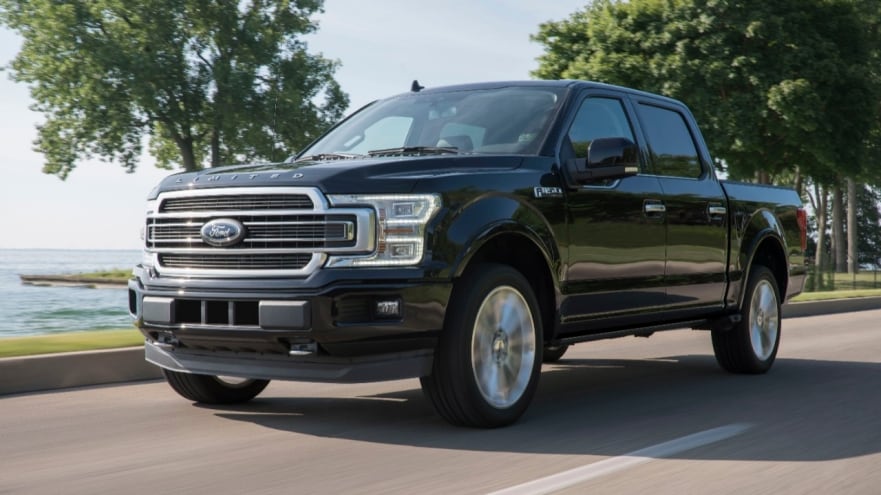
2. Ford F-150 Limited (2021–Present)
The Ford F-150 Limited is one of the most technologically advanced and luxurious half-ton pickups ever made, but that high-end appeal comes at a steep cost, especially when measured against the grit and grime of farm life.
Equipped with massaging seats, a fold-out center console that turns into a work desk, a 12-inch infotainment screen, and power everything, this is a truck built to coddle.
It’s great for people who want a pickup with the feel of a German luxury sedan, but it’s overkill—both in cost and complexity—for anyone using their truck as a daily tool on the farm.
One of the biggest drawbacks of the F-150 Limited in a rural setting is its overwhelming dependence on technology. Ford’s newest F-150s come with Pro Power Onboard generators, advanced driver assistance features, and fully digital dashboards. While these innovations are impressive, they also add dozens of failure points.
A little water intrusion, a strong bump in a rutted dirt road, or a software hiccup can render key systems inoperable. In many cases, you can’t even access the truck’s most basic functions without engaging with the touchscreen or voice command system, neither of which plays nicely with dust-caked hands and gloved fingers.
When you’re racing daylight to deliver feed or check fences, the last thing you want is a frozen infotainment screen or a truck that refuses to start due to a computer bug.
Additionally, the Limited’s sleek design and premium trim make it painfully impractical for tough use. Glossy interior panels, ventilated leather seats, and chrome exterior accents don’t hold up to fieldwork. Climbing in with muddy boots becomes a moral dilemma rather than a routine task.
And while the powertrain—a high-output EcoBoost or a V,8 depending on the year—has strength, the ultra-smooth ride and lowered front fascia mean the truck just isn’t meant to navigate rocky pastures or flooded trails.
For those who work in boardrooms and haul nothing heavier than golf clubs, the F-150 Limited is a technological marvel. But on the farm, it’s out of its depth—and out of place.
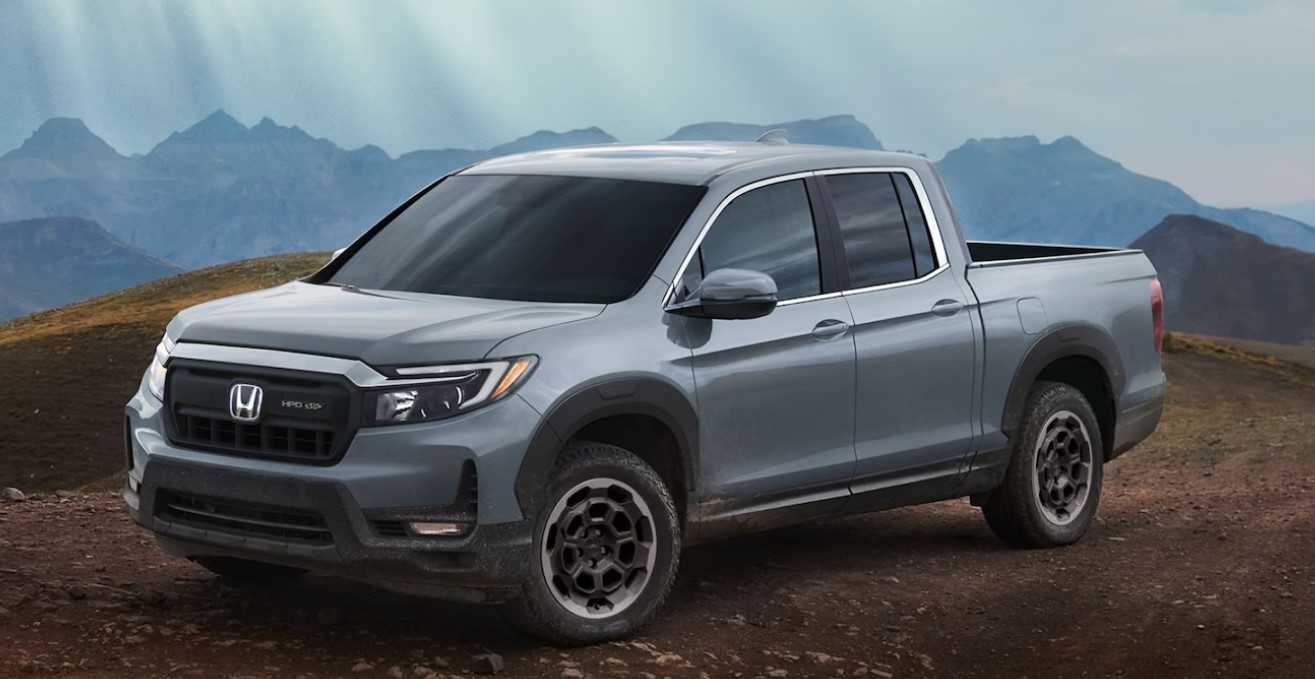
3. Honda Ridgeline (All Generations)
The Honda Ridgeline has always walked a fine line between pickup and crossover, and while it has earned praise for its comfort, car-like ride, and smart design features, it simply doesn’t belong anywhere near a working farm.
Built on a unibody platform shared with the Honda Pilot, the Ridgeline lacks the true body-on-frame construction that gives traditional pickups their towing muscle and structural toughness.
Its independent suspension and all-wheel-drive system may be fine for snow-covered suburban roads, but when it comes to towing heavy loads, pulling trailers, or surviving deep ruts and thick mud, the Ridgeline bows out early.
While Honda engineered the Ridgeline with clever features like a lockable in-bed trunk and dual-action tailgate, these conveniences are geared toward tailgate parties, not tool-hauling.
The bed is smaller than any full-size truck, and while it can carry light cargo, it lacks the chassis rigidity and bed strength needed for serious farm labor.
Try throwing feed bags, steel fence posts, or tractor parts in there repeatedly, and you’ll quickly see the limitations.
Add to that a towing capacity that maxes out under 5,000 pounds, and it’s clear the Ridgeline simply isn’t built for the farm. Livestock trailers, flatbeds, or equipment haulers aren’t just a challenge—they’re out of the question.
Then there’s the issue of durability in extreme conditions. The Ridgeline’s low ground clearance, front-wheel-biased drivetrain, and limited aftermarket support make it a poor choice for those navigating rough terrain, maintaining their own equipment, or needing robust recovery options.
Parts are more expensive than traditional trucks, and the vehicle’s layout makes even basic service more complicated.
It’s a fantastic urban truck, ideal for weekend adventures and light duty, but out on the farm, it’s more of a liability than an asset. If you’re looking for a real work truck, the Ridgeline is better left parked at a weekend cabin or in a city driveway.
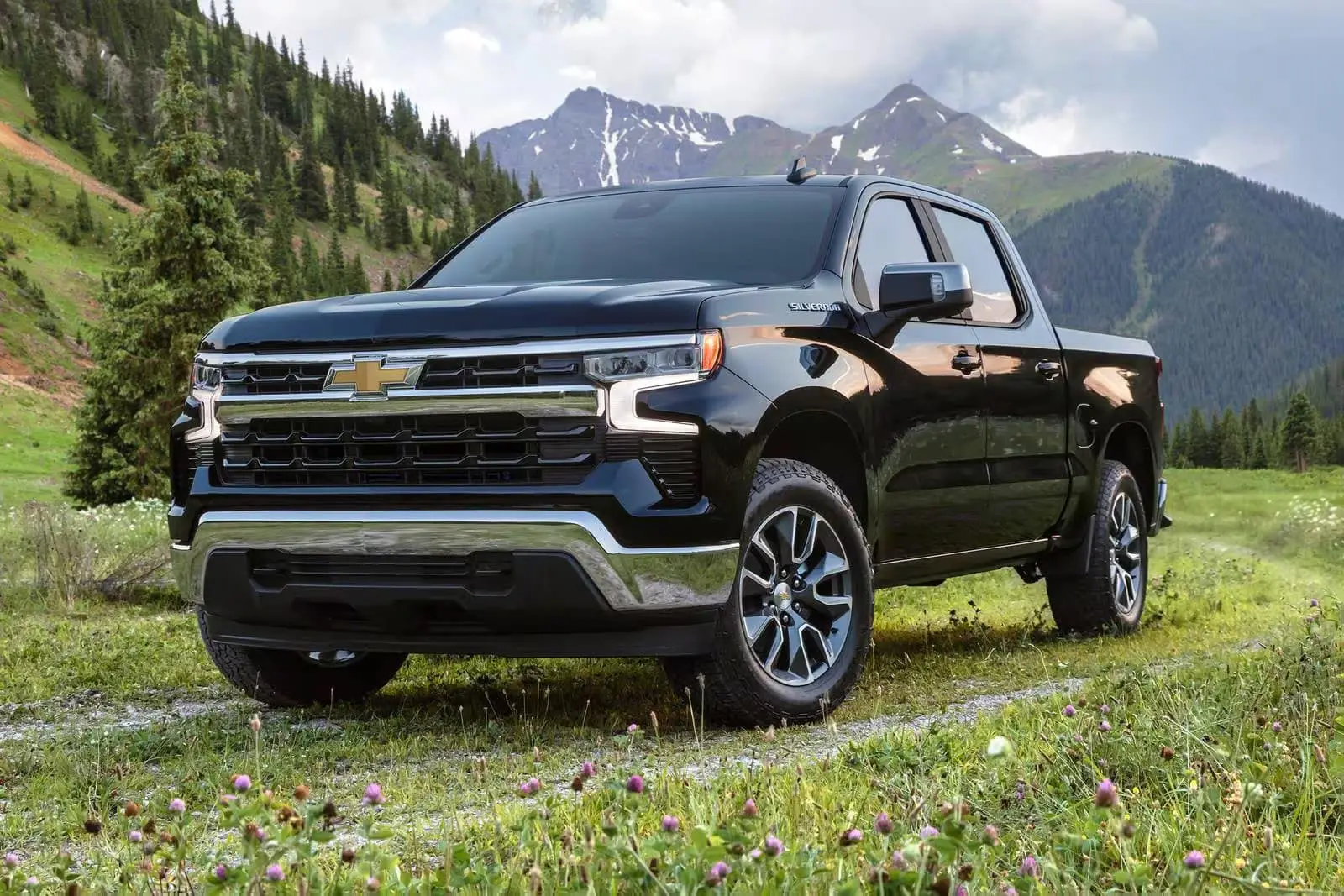
4. Chevrolet Silverado High Country (2019–Present)
The Chevrolet Silverado High Country is a truck that looks the part of a rugged workhorse but is dressed up for a gala.
With its rich leather upholstery, bronze trim accents, heated everything, and a technology package that includes adaptive cruise control and semi-autonomous trailering features, it’s clear this truck is built for the buyer who wants refinement over raw functionality.
While the 6.2L V8 engine is powerful and the chassis is capable, the High Country trim leans so heavily into luxury that it compromises the truck’s ability to take the punishment of real farm life.
Farm use means getting dirty, working in unpredictable weather, and throwing everything from tools to feed bags into the back seat. That’s where the High Country starts to fall apart. The plush cabin is beautiful, but not designed for wear and tear.
Scratched leather, malfunctioning heated seats after water intrusion, and easily damaged electronics make the truck feel fragile when exposed to the daily grind of agricultural work.
Even the bed is compromised in this trim, outfitted with sensors and power tailgates that are more sensitive to dirt and impact than you’d expect in something that claims to be “work-ready.”
It’s also worth mentioning the long-term ownership challenges. With all its digital components, the High Country becomes a nightmare when something goes wrong. Repairs are expensive, often requiring dealership visits, and diagnostics aren’t always straightforward.
Suspension settings that adjust automatically are great on paved roads, but when they malfunction after driving over uneven terrain, they can turn into a costly, time-consuming fix.
Ultimately, the Silverado High Country may wear the Chevy badge proudly, but its high-gloss design and finicky components make it a poor match for the messy, demanding nature of real farm life.
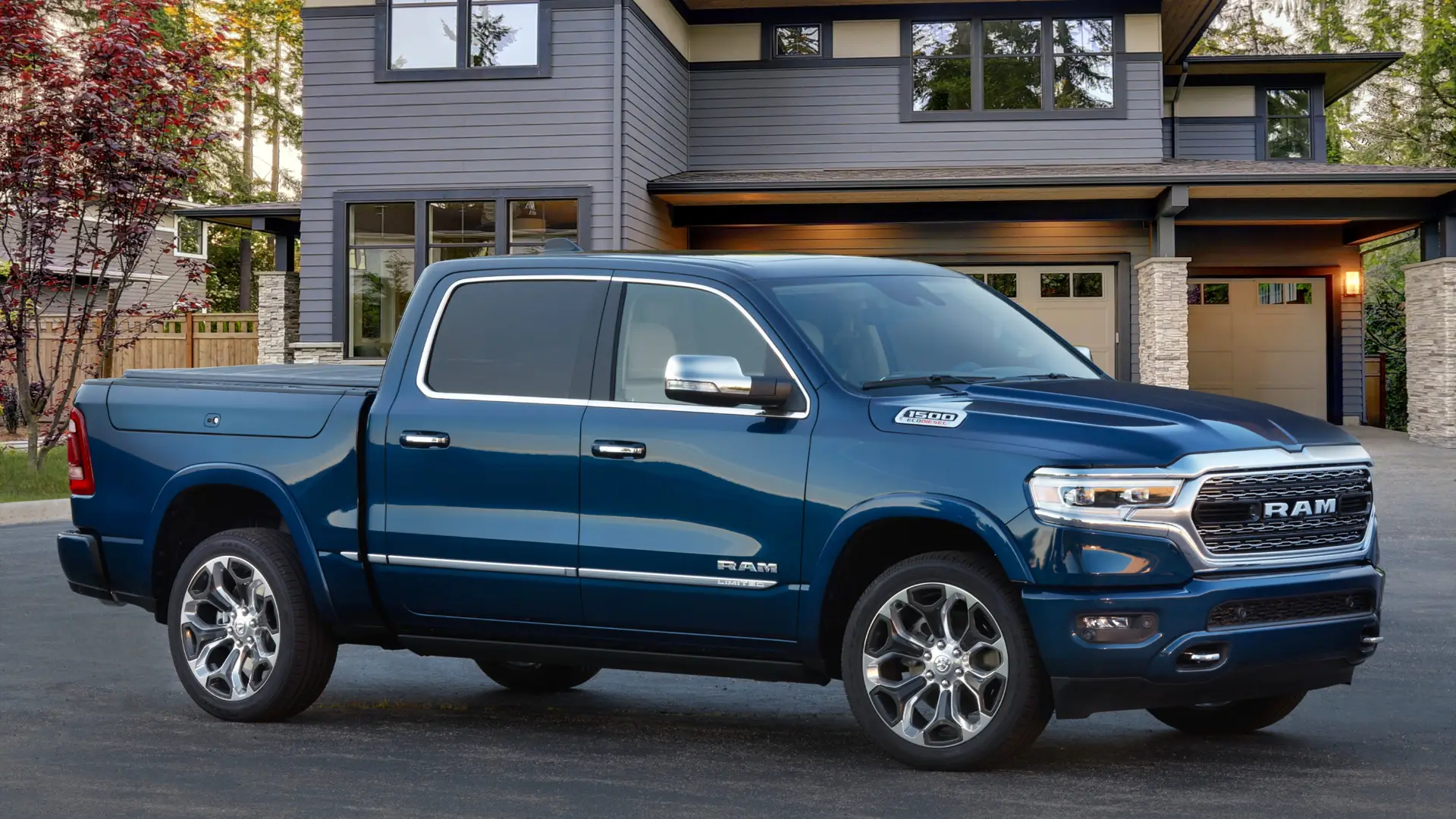
5. Ram 1500 Limited (2019–Present)
The Ram 1500 Limited might just be the most luxurious pickup truck currently on the market. With a cabin that rivals German sedans in finish and comfort, air suspension for ride height adjustment, a massive 12-inch infotainment screen, and real wood trim, this truck is designed for indulgence, not intensity.
It’s great for commuting, weekend road trips, and impressing clients. But as a daily tool on a working farm, it falls short. Very short.
One of the most glaring issues is its fragile suspension. The air-ride system, while smooth and adjustable on pavement, is prone to failure when exposed to mud, debris, or freezing temperatures—conditions that are standard on most farms. When these systems fail, you’re left with an immobile truck until it can be towed to a dealership.
And good luck finding someone who can fix air suspension on short notice in a rural area. Add to this the countless sensors, power-retractable features, and touch-sensitive controls, and you’ve got a truck that acts more like a luxury SUV than a rugged work machine.
The Ram 1500 Limited simply doesn’t want to get dirty. From its light-colored leather seats to its delicate electronics and chrome accents, everything about this truck screams “don’t scratch me.” It may be rated for towing, but it’s clearly not designed to do it daily in harsh environments.
Farmers need vehicles they can climb into with muddy boots, pressure wash inside if necessary, and repair with basic tools.
The Ram Limited is none of those things. It’s a rolling throne—beautiful, refined, and highly capable in the right environment—but on the farm, it’s out of place, out of its element, and often out of commission when you need it most.
Also Read: Top 10 EV Features That Come in Useful in Daily Commute
At the end of the day, not all trucks are built to serve the same master. In a world where modern pickups are increasingly positioned as lifestyle statements, it’s easy to forget the fundamental reason trucks were created in the first place: to work. To dig in, haul heavy, and get dirty without complaint.
And while some automakers are still committed to that original mission, others have allowed luxury, aesthetics, and technology to take priority over function and field-tested reliability.
The difference between a truck that thrives on a farm and one that flounders becomes painfully clear when you spend a season in the dirt, not just a day in the driver’s seat.
The five trucks we spotlighted as farm-capable aren’t flawless—they each have quirks, maintenance needs, and trade-offs—but what they offer is honesty. Trucks like the Ford F-250 Super Duty, Ram 2500 with Cummins, or the Toyota Tundra aren’t just respected because of what they say on paper.
They’re respected because they show up every day. They’re vehicles that can be wrenched on in the barn, washed out with a hose, and put back to work after a weekend of tough love.
These are trucks that don’t ask for much—just fuel, routine care, and a purpose—and they repay that loyalty with years, sometimes decades, of unrelenting service.
Contrast that with the showroom darlings—trucks that look the part, boast cutting-edge features, and cost nearly as much as a small house. They promise luxury and capability in one package, but when faced with the unpredictable and unforgiving nature of farm life, they reveal their fragility.
The Ford F-150 Limited, GMC Sierra Denali, and Ram 1500 Limited are perfect examples of this shift in truck culture. Their interiors rival luxury cars, and their exteriors are decked out in chrome and curves, but their intricate systems and delicate trim make them more suited for polished pavement than pasture paths.
You can tow a trailer with them, sure—but you better have clean boots and a credit card ready when something breaks.
The most concerning aspect of these showroom-bound trucks isn’t that they’re incapable—it’s that they’re pretending to be something they’re not. They come with factory-installed off-road packages, rugged-looking badges, and splashy marketing campaigns that depict them climbing mountains or splashing through rivers.
But those packages often amount to cosmetic upgrades and software tweaks rather than real, hardware-driven toughness. And for a farmer, a contractor, or anyone who earns a living outdoors, that distinction matters. Flashy can be fun, but durability is everything.
Looking forward, the future of trucks will likely continue to diverge. With electrification, advanced driver-assistance systems, and integrated smart tech becoming the norm, trucks will become even more capable in some ways—but also more complex and more dependent on environments where diagnostics and service are just a dealership away.
The challenge for the working world will be finding trucks that stay grounded—machines that are still repairable with basic tools, still able to run without pristine roads, and still built with labor in mind. Fortunately, some manufacturers still understand that need, and the used market continues to be a goldmine for proven, dependable workhorses.
In short, it’s not about which truck has the most horsepower or the flashiest trim package—it’s about which one you can count on when your fence line is down and the rain’s rolling in.
The farm doesn’t wait, and neither should your truck. Choose wisely, and your rig will become more than just a vehicle.
It’ll be your partner in the dirt, your backup when equipment fails, and your lifeline when the job has to get done. Everything else? Leave it in the showroom where it belongs.

